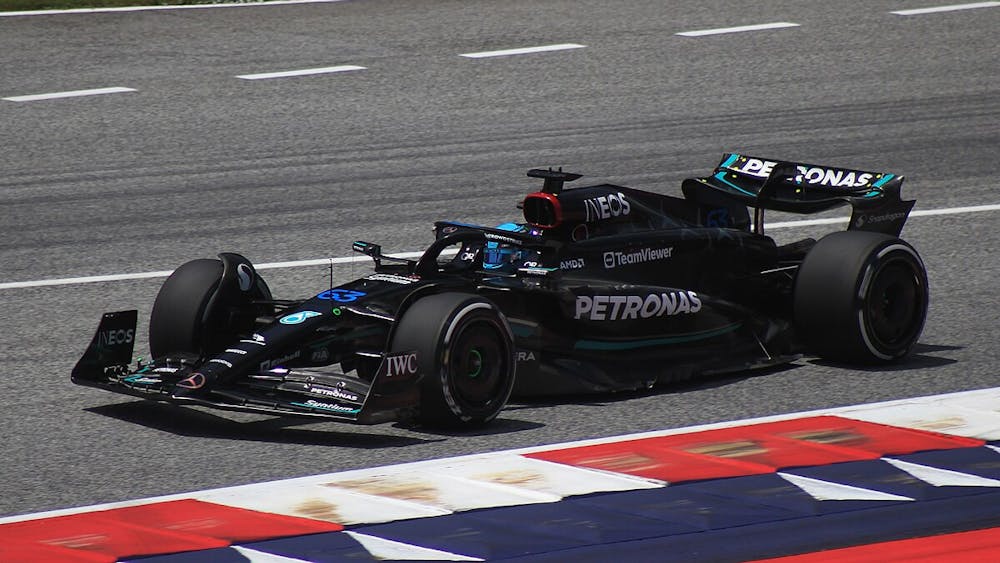If you ever sit in your bed and get the sudden urge to watch a group of some of the world’s cockiest men drive around in circles with super fast cars, Formula 1: Drive to Survive might just be the thing for you.
The sixth season of Formula 1: Drive to Survive came out on Feb. 23 on Netflix with ten brand-new episodes. This sports docuseries portrays the ten Formula 1 (F1) teams along with their 20 drivers.
To give some background, F1 consists of 10 teams, each racing against each other over the course of the year on 24 tracks all over the world. The driver with the most points by the end of the season (usually gained based on your place at the end of each race) wins the World Drivers' Championship, and the team with the most combined points wins the World Constructors' Championship.
Sounds exciting right?
It is! Or, it’s supposed to be.
In an ideal world, each team manufactures a championship-worthy car that can battle for the top spot, but in recent years, and, frankly, since the beginning of the 2010s, the winners have been monopolized by a few teams and people. One person almost always dominates the championship and the top three teams stay the same (Red Bull, Mercedes and Ferrari). It’s great if you are a Formula 1 fan but terrible if you are trying to make a TV show about it.
Yes, there’s drama. There always is when you are putting 20 of the world’s most competitive men in a competition. But, when drivers like Max Verstappen won 19 out of the 22 races in the 2023 season, how do you manage to make that entertaining?
Formula 1: Drive to Survive always comes with its controversies. The drivers complain about having to be interviewed, they get quiet when they feel the boom mic lurking above them and some, like Lewis Hamilton, do everything they can to avoid being in the shot. The show itself has been infamously known for taking reports and conversations out of context to create rivalries between drivers and has even taken shots from previous seasons or other races to add to the dramatic effect of an episode.
The problem is that it works. If you add in some snappy, overly repeated phrases that make every race seem like it’s life or death, a melodramatic soundtrack and cool shots of the cars, you’ve got yourself one of the most popular sports shows in Netflix history.
Season 6 is (almost) no different. It's the same soundtrack, the same interviews, the same feelings of hope and the same frustration from the drivers. But, there are a few notable differences.
One of the most discussed topics this season is the additions made to the commentators. The most infamous is former race car driver, Danica Patrick, who serves the show best by overexplaining the most basic aspects of F1, despite being someone who has never driven for F1. Second, is Claire Williams, former deputy team principal of the Williams Formula One racing team; as someone formerly involved in leadership and development of the cars, Williams serves as a valuable asset to the show as she counters and interprets the commentary given by the current team principals.
The rest remains fairly the same: Paired with clips of the driver’s daily lives and regular season routines, each episode looks at each team's most significant moments of the season. It dives into intimate case studies of things we only get glimpses of during the regular season, including Hamilton’s tension with Mercedes-Benz, Pierre Gasly and Esteban Ocon becoming the Alpine F1 Team’s worst nightmare and McClaren Formula 1’s resurrection.
It seems to me that Formula 1: Drive to Survive is an attempt by F1 to expand its audience and gain more reach. This is because F1 is inherently hard to watch. Not only are the constantly changing time zones an obstacle, with times fluctuating between 9 a.m. and 1 a.m. EST every other weekend, but following F1 is expensive, too. Just to watch the races live, prices trail around $40 a month, making it extremely difficult for the sport to gain traction or interest from the general public.
This is where the show itself shines. It allows audiences to have an intimate, yet dramatic and arguably inaccurate, summation of the past seasons with a streaming app that most of them already pay for. And, for the fans who stay up until all hours of the night to watch the regular season (and yes, I am one of them), it gives them a fantastic opportunity to see intimate case studies of the highlights of the season — even if the same driver wins over and over and over...





